各位一定都坐过飞机,每当飞机一着陆,引擎就会传来一阵轰鸣。几秒后,飞机减速,滑出跑道,停稳后,物理老师说此时,你再下机。飞机要停下,可不只是飞行员使劲踩刹车踏板这么简单(这好像是句废话)——事实上,飞机根本没有刹车踏板。
喷气式飞机着陆后,各个系统会配合工作,尽可能在规定时间内减速到规定速度,要不就要撞墙(误)复飞再降一次(P.S. 为什么我们说有些机场有点low,目前最大的客机大概是空客A380,这么个最大起飞重量的大家伙在4E级以下机场(流亭为4E,新胶东是4F)根本停不下来啊-)。
飞机着陆时,大家都会认为飞机是“Duang”的一下摔在地上的,但就是这一下子,飞机起落架传感器接受着陆信号,启动自动刹车系统(详见公众号航空物语:飞行员:“落地震一震,可能更健康哦”一文)这时,飞机的减速板升起(如视频中机翼上升起的板子),发动机的反推力系统也开始运转(视频中发动机上裂开的大口子)
顾名思义,减速板就是通过开启一个角度,增加飞机的迎风面积并破坏飞机流线形,对空气形成增阻和扰流的作用,使飞机骤然减速。我们通常会听到着陆时有一阵“嗡嗡”的声音,那就是减速板在升起。
飞机的刹车系统是非常有效的,但是在跑道湿滑或结冰的情况下,由于轮胎仅有纵向花纹而难以获取摩擦力,这时就需要反推助力。
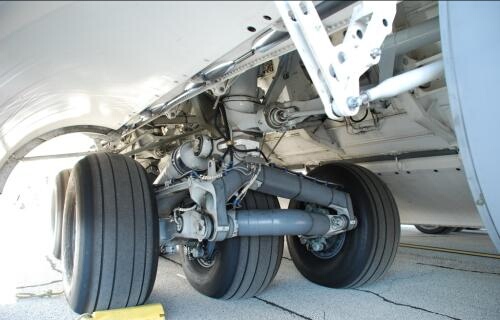 航空轮胎,图片来自网络
航空轮胎,图片来自网络
所谓反推,就是在发动机内部,通过反推导流板,把本应向后喷的气流反向喷出,物理老师说物体间力的作用是相互的,引擎给空气向前的推力,空气就给飞机向后的阻力。
这是一台飞机发动机:
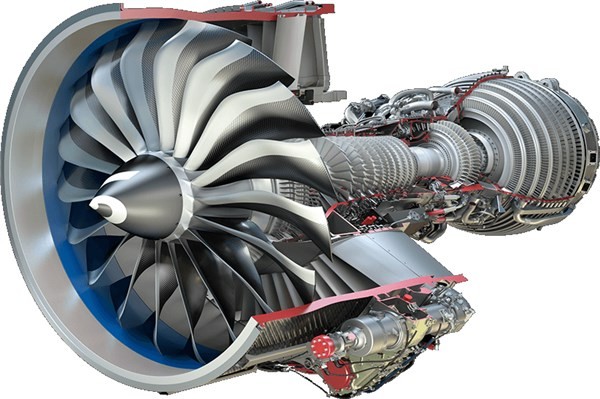 图片来自网络
图片来自网络
正常的气流方向
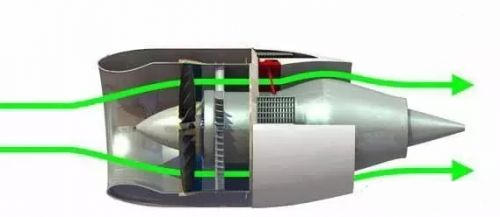 图片来自网络
图片来自网络
反推开启后的气流方向
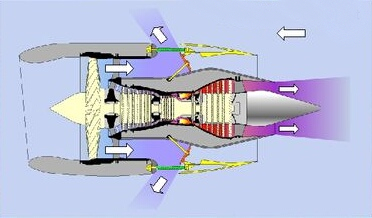 图片来自网络
图片来自网络
开不开反推导致的滑行距离对比:
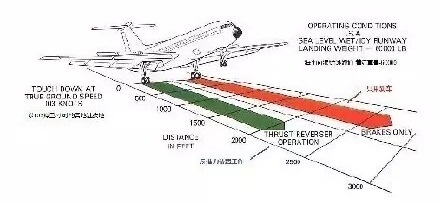 图片来自网络
图片来自网络
就这样,飞机在刹车系统、减速板及反推系统等的配合下,减速离开跑道。这时乘务姐姐就开始进行“…请大家保持安全带扣好系紧…美好的时光总是短暂的”一类的广播,飞机滑到停机位,旅客下机,飞机也结束了本段航程,奔赴下个目的地。
Everyone must have flown. Every time the plane land, there engine will make a sound of roar(巨响). After a few seconds, the plane slows down, slides(滑行) out of the runway, and after the plane completely stop, the physics teacher says that at this point, , you can get off the plane.It’s not as easy as the pilot step(踩) on the brake pedal(刹车踏板) hard——In fact, there is no brake pedal on the plane at all.
When a jet plane(喷气式飞机) lands, many systems work together to slow down to the required speed as possible, or the plane will have to go around(复飞) to try again. (P.S. Why do we say some airports are a little backward(落后的)? The biggest passenger plane in the world may be the Airbus A380 now, the huge plane which has a maximum take-off weight(最大起飞重量) of cannot be stopped at the airport below 4E at all.(Liuting Airport is 4E, and the new Jiaodong Airport will be 4F))
When the plane landed, we may thought the plane is fell on the ground in the sound of Duang, but that was the moment when the landing gear sensor(起落架传感器) receives the landing signal(信号) and turns on the automatic braking system.(For more details, please refer to the Wechat Media Platform called Hangkong Wuyu: 飞行员:“落地震一震,可能更健康哦”)At this point, the plane’s airbrakes(减速板) rises (it’s the board that rising on the wing), The engine’s thrust reverser(反向推力装置) is also begins to operate (it’s the black hole on the engine).
As the name, the airbrake is to increase the windward area(迎风面积) of the aircraft and destroy the plane’s streamline shape(流线型) by opening an angle, which will cause the air to be blocked and disturbed, causing the aircraft to slow down suddenly. We usually hear a buzzing sound during landing, that is the airbrake rising.
The aircraft’s braking system is very effective(有效的), but when the runway is wet or icy, it is hard to get friction(摩擦力) because the tires have only lengthways(纵向的) patterns. At that time, the plane need to use the thrust reverser.
 The plane tires | Photo From the Internet
The plane tires | Photo From the Internet
The thrust reverser is to turn the air that should be jetted(喷射) back the plane over through the board. The physics teacher says the forces acting on objects are interactive, so if the engine gives the air a forward force and the air will give the plane a backward force to make the plane stop.
This is an airplane engine:
 Photo From the Internet
Photo From the Internet
The normal flow direction
 Photo From the Internet
Photo From the Internet
The flow direction after the thrust reverser is turned on
 Photo From the Internet
Photo From the Internet
Comparison of sliding distance caused by the thrust reverser:
 Photo From the Internet
Photo From the Internet
In this way, the aircraft slids out from the runway with the help of braking system, airbrake and thrust reverser system. Then the stewardess(空乘) began to bordcast(广播):”… Please keep your safety belt fastened… The good times are always short…” the plane slid to the parking apron(停机坪), the passengers get off, the plane ended the flight, and went to the next destination.